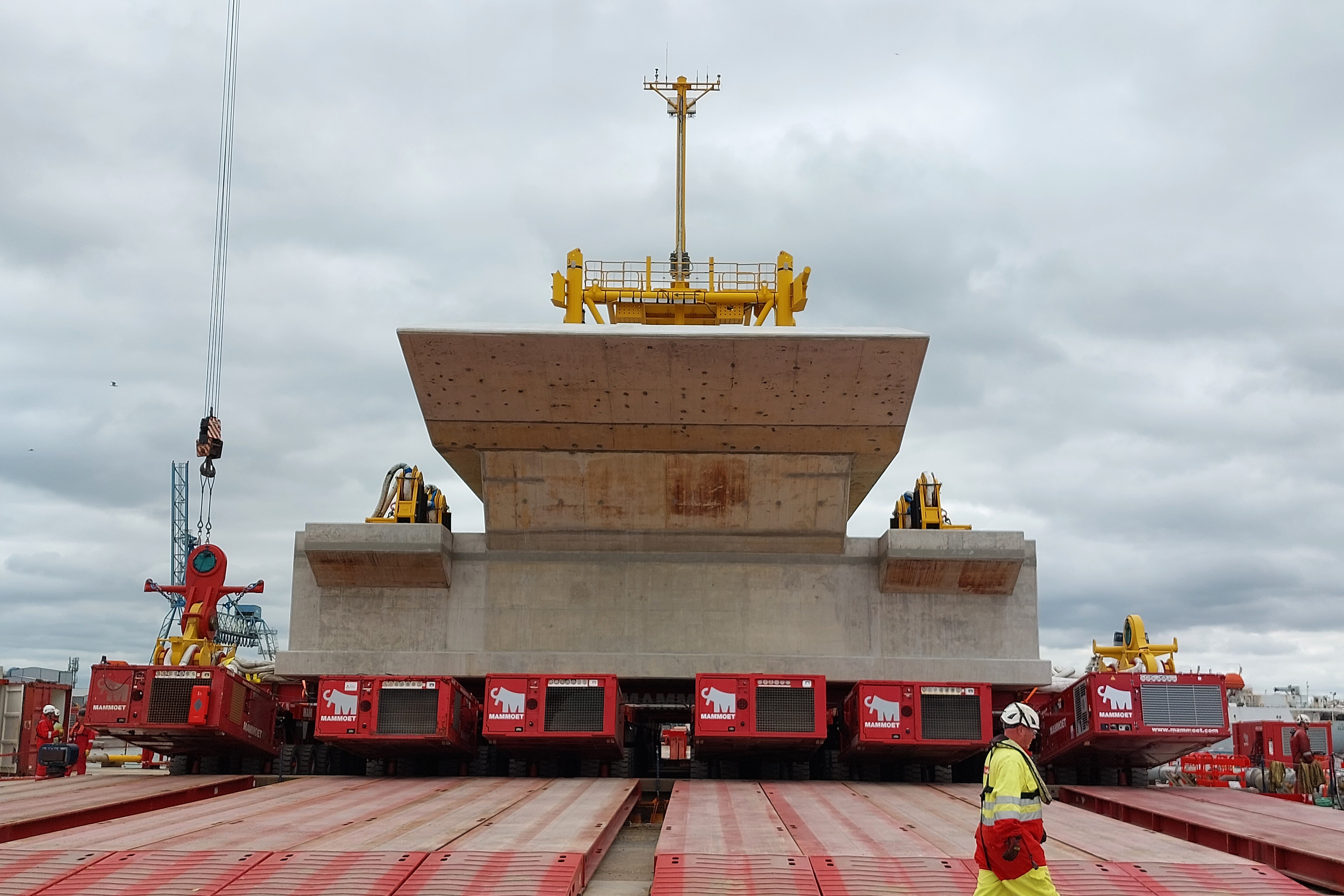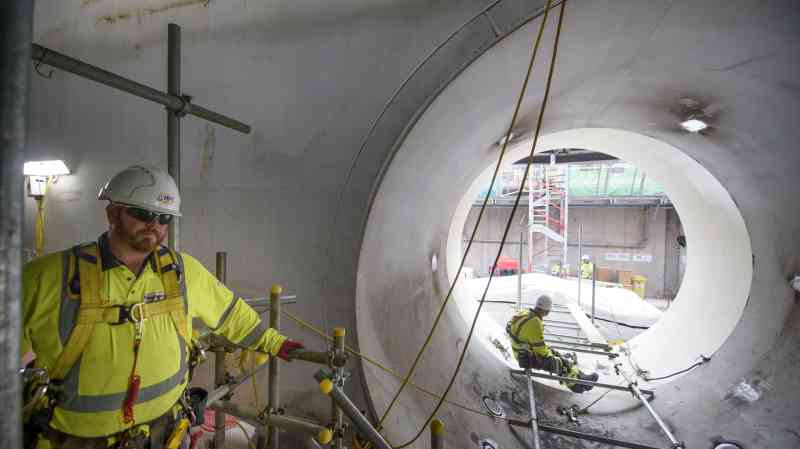Off the coast of the Hinkley Point C site in Somerset, two floating cranes in the Bristol Channel prepare for one of the most challenging tasks in building the nuclear plant.
On Sunday, they are due to lower onto the seabed the first of four 5,000-tonne water inlet units that will cap the tunnels supplying cooling water for the plant. Each concrete unit is twice as tall as a double decker bus but must be orientated with just 40mm tolerance, so as to minimise the number of fish that will be sucked to their deaths.
“It’s really big precision engineering,” Stuart Crooks, managing director of Hinkley Point C, says. “It’s watch-making on an industrial scale.”
The Hinkley “watch” may be technically impressive but it is running slow. The plant, which could power six million homes, was promised by the French developer EDF to be operating by Christmas 2017. Construction work finally got under way in 2016, targeting first power in 2025, but that date has slipped to mid-2027 with a further delay of 15 months possible.
With those delays come spiralling costs: from a projection of £18 billion in 2016, the budget has repeatedly risen and, after a £3 billion increase in May, stands at £25 billion to £26 billion. Even that is an understatement given that EDF is still citing 2015 prices, so the effects of inflation are not included.
EDF says the complex marine works in the Bristol Channel account for about £500 million of the latest increase because the original design was too risky to install and was redrawn. “It’s clear our original cost estimate was flawed,” Nigel Cann, the Hinkley delivery director, says.
Another £500 million more than expected has been spent on detailed design studies, which are not finished but have concluded that the plant will need 20-30 per cent more building materials than expected, costing £500 million more. Crooks attributes £1 billion of the costs and at least a year of delay to Covid disruption but admits the final £500 million is where “we’ve not performed as well as we would have expected”.

The delays and cost overruns risk undermining the case for the government investing £1.7 billion in a proposed sister station at Sizewell C in Suffolk, with a new funding model that makes consumers financially responsible for overruns. EDF has not given an estimate for Sizewell C since 2020 when it said £20 billion, but Crooks says building material rises will apply there too as “quantities aren’t going to get any less”.
Sizewell should benefit from Hinkley’s detailed design work and on productivity, Cann says “we’d like to think they’d do better because they’ve learnt from us”. At Hinkley, EDF is responsible for cost overruns along with its partner CGN, the Chinese state nuclear group that has a one-third stake.
Crooks says the shareholder agreement has limits for the companies, after which they must decide whether to commit additional funding, but these will not be reached “for quite a while yet”. He concedes that inflation may present “a cash flow issue for the shareholders”. He says EDF is “absolutely committed” to completing Hinkley.
The biggest risks for the timeline now relate to staff, he says: “It’s challenging to get the right people with the right skills to work on the project.” About 7,500 people are on site but it is short of 250 steel fixers. EDF has asked the government to help smooth the way for more workers from overseas.
The marine works could yet provide more challenges, too. EDF’s original design included an acoustic fish deterrent — “speakers you stick on the bottom of the sea . . . that say to fish ‘please don’t come near’,” Crooks explains. But in 2019 EDF applied to ditch this: Cann says it concluded it would be “dangerous” to install and maintain, was unnecessary since the inlet heads and a novel “fish return system” should do the job, and would not work as “some fish haven’t got ears”. It could also pose challenges to the operation of the plant.
“It fills me with horror as an operator: imagine you’re pumping out 3.2 gigawatts and the fish deterrent falls over. What are you going to do, shut [the plant] down?”
EDF awaits a government decision. Cann says it has made “a robust case that we don’t need to build it”. If ordered to do so, it would cost in excess of tens of millions of pounds and threaten more delays. “We’d have to commission the system, I’d have to run an 11,000-volt cable out to sea and build a platform out there,” Cann says. “It wouldn’t be a good day in the office for me.”
